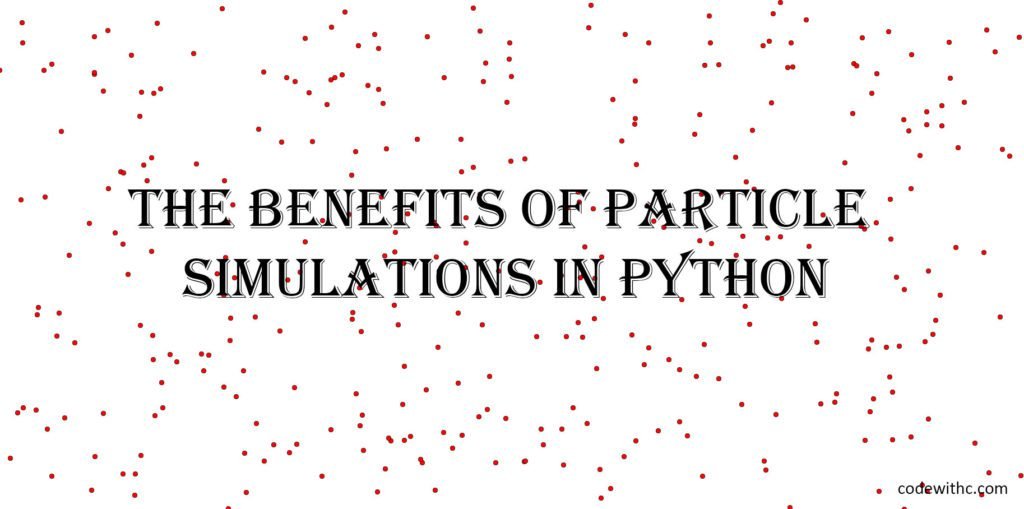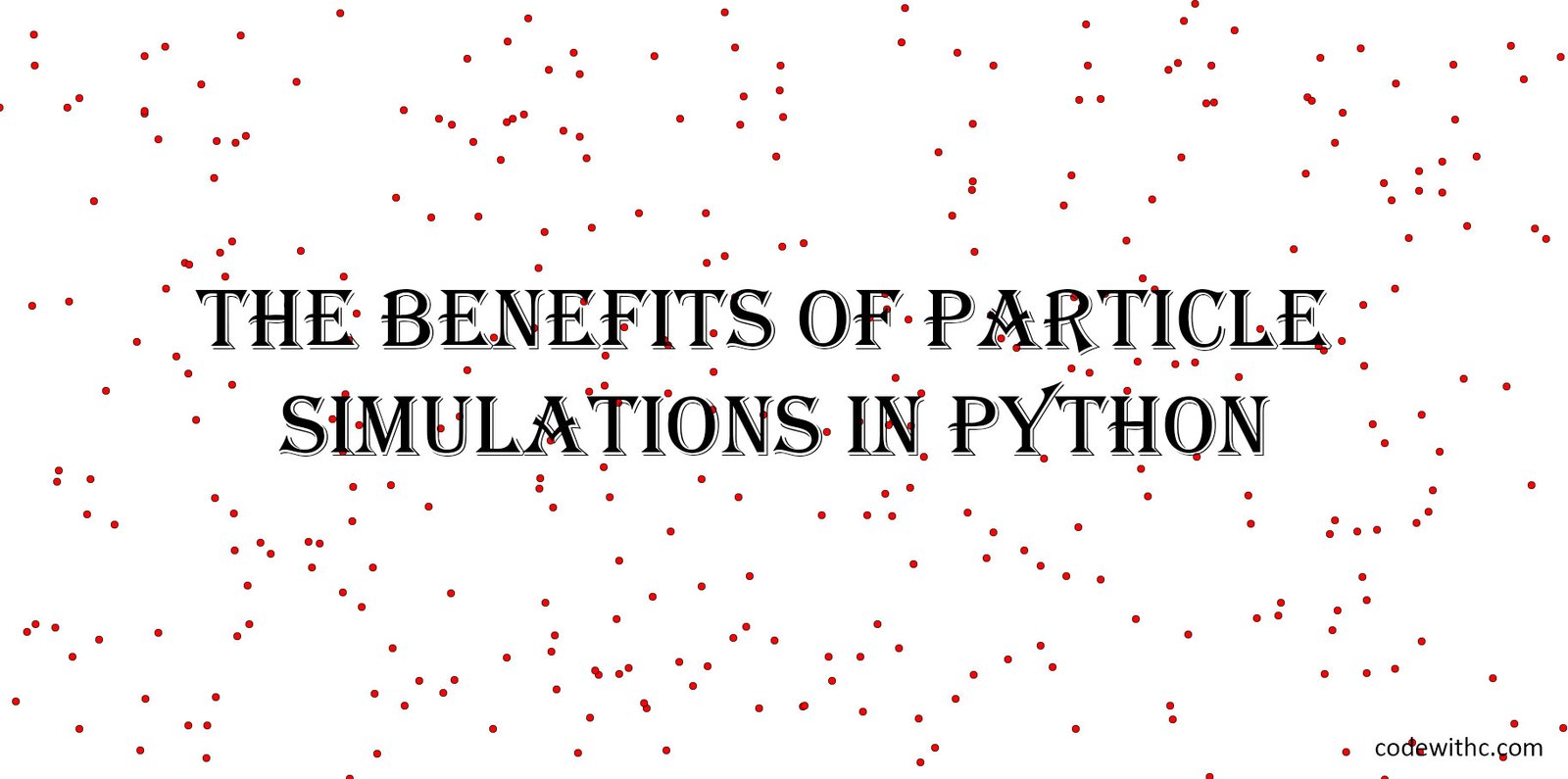
Python is a great language for doing scientific and technical computing. One of the things that makes it great for this type of work is its support for particle simulations. In this post, I’ll explain what particle simulations are and why they’re important. I’ll also show you how to do them in Python.
This blog post is intended as a hands-on introduction to computer simulations of physical systems, using the Python programming language.
The following are the aims of the blog:
To create applications that perform numerical computations and generate visual output, you’ll need to learn enough of the Python language and VPython and matplotlib graphics packages.
Learn how to do mathematics on a computer using step-by-step instructions (such as solving differential equations)
Learn about Newton’s laws and other physical ideas in a deeper way.
Examine a variety of physical systems for which conventional pencil-and-paper calculations are insufficient, and watch what sorts of behaviors emerge.
Making Shapes in Python programming
In this section, we’ll go over the basic mechanics of creating shapes in the Python programming language. We’ll cover the following topics:
Basic shapes: points, lines, polygons
- Colors
- Coordinate systems
- Creating 3D objects
Python is a powerful programming language that is widely used in many different application domains. VPython is a 3D graphics library for Python that is built on top of the popular OpenGL library. Matplotlib is a 2D graphics library that can be used to generate publication-quality figures.
In order to create our applications, we will need to learn enough of the Python language and VPython and matplotlib packages.
Projectile Motion in Python programming
In this section, we will use the Python programming language to simulate the motion of a projectile. We will cover the following topics:
- The physics of projectile motion
- Numerical integration in Python
- Visualizing projectile motion in 3D
Projectile motion is a type of motion in which an object (called a projectile) is thrown or launched into the air and then follows a path determined by its initial velocity and the force of gravity. Projectiles are often seen in sports, such as baseball, football, and javelin throwing. Numerical integration is a mathematical technique that can be used to solve differential equations.
The goal of a simulation is to put the laws of physics into the computer and then allow the computer to compute what happens in time as a function of time. In this blog, the laws that will most often be Newton’s laws of motion will be used to predict the movement of one or more objects subjected to numerous forces. We may simulate any forces, initial conditions, and even lack of an accurate equation for the motion.
Pendulum – Particle Simulations in Python
Pendulum is an open-source Python library that implements the pendulum dynamics equation. The library provides a set of tools for modeling, simulating, and analyzing pendulum systems. Pendulum is available on GitHub under the MIT License.
Pendulum is often used as a simple model for physical systems such as clocks, swings, and cranes. The pendulum equation is a second-order differential equation that describes the motion of a pendulum under the influence of gravity. The equation is derived from Newton’s laws of motion and can be written in the form:
m l \frac{d^2\theta}{dt^2} + b \frac{d\theta}{dt} + g sin
Orbits in Python Particle Simulations programming
Orbits are the paths that objects in space take as they travel around other objects. Many objects in our solar system orbit the sun, including planets, asteroids, and comets. The moon orbits Earth, and satellites orbit planets and asteroids.
In Python programming, orbits can be simulated using the following equation:
x = r cos(θ)
y = r sin(θ)
Where r is the radius of the orbit and θ is the angle between the center of the orbit and the object’s position vector. The angle θ is measured in radians.
To simulate an orbit, we will need to import the math module. This module provides access to mathematical functions such as sin() and cos().
Molecular Dynamics in Python programming
Molecular dynamics is a branch of physics that studies the motion of molecules in both gaseous and condensed phases. In Python programming, molecular dynamics can be simulated using the following equation:
x(t+Δt) = x(t) + v(t)Δt
Where x is the position of the molecule, v is the velocity of the molecule, and Δt is the time step.
The time step Δt is typically very small, on the order of 10-12 seconds. To simulate molecular dynamics, we will need to import the NumPy module. This module provides access to efficient numerical functions such as matrix operations.
Random Processes in Python programming
Random processes are used to model systems that exhibit random behavior. Many physical systems, such as radioactive decay and Brownian motion, can be modeled using random processes.
In Python programming, random processes can be simulated using the following equation:
x(t+Δt) = x(t) + v(t)Δt + σ ε(t)Δt
Where x is the position of the particle, v is the velocity of the particle, σ is the standard deviation, ε is a random variable with a mean of 0 and a variance of 1, and Δt is the time step.
To simulate a random process, we will need to import the NumPy module.







